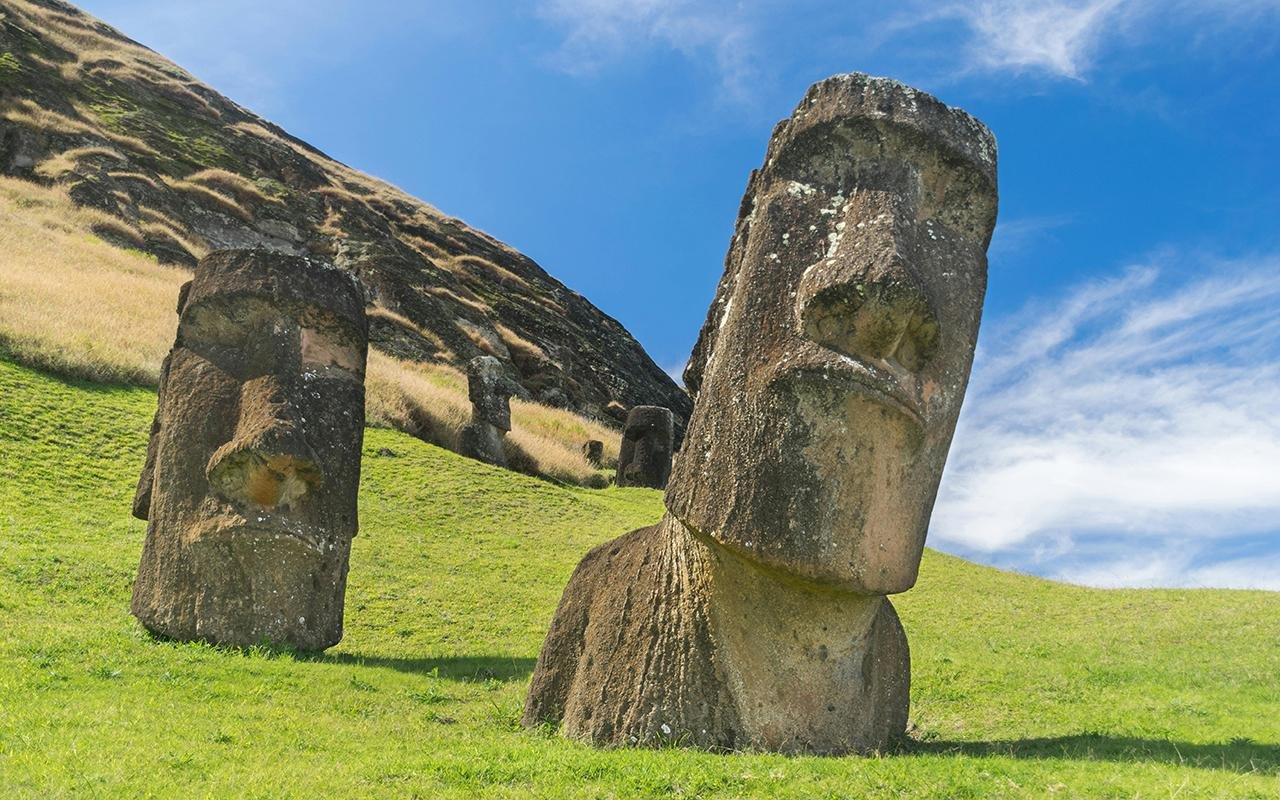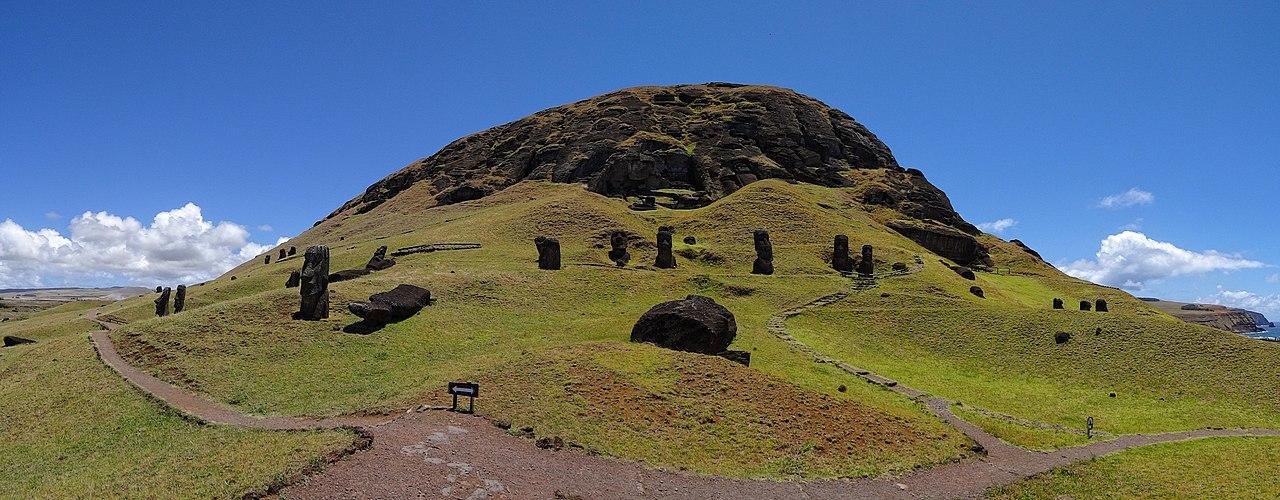A new Moai, one of Easter Island’s iconic monolithic statues, has been discovered in the bed of a dry lake in a volcano crater, according to the Indigenous community that administers the site on the Chilean island.
 Recent studies challenge the long-held belief of ecological collapse on Easter Island, revealing that the population remained stable through effective resource management. Credit: Diego Gonzalez
Recent studies challenge the long-held belief of ecological collapse on Easter Island, revealing that the population remained stable through effective resource management. Credit: Diego Gonzalez
The statue is around 5 feet tall and was uncovered lying on its side. It was found by a team of scientific volunteers from three Chilean universities who were working on a project to restore the marshland in the Rano Raraku volcano’s crater.
The volcano’s laguna, or lake, began to dry up in 2018, the director of the Ma’u Henua community told The Guardian. This community manages the Rapa Nui national park, which includes the volcano.
Researchers told ABC’s “Good Morning America” it’s a smaller statue, and the team probably will use carbon-14 dating to figure out how old it is.
 The Rano Raraku volcano in the Rapa Nui park, Easter Island, Chile. Credit: Bjørn Christian Tørrissen
The Rano Raraku volcano in the Rapa Nui park, Easter Island, Chile. Credit: Bjørn Christian Tørrissen
“This Moai has great potential for scientific and natural studies, it’s a really unique discovery as it’s the first time that a Moai has been discovered inside a laguna in a Rano Raraku crater,” the Ma’u Henua Indigenous community said in a statement on Tuesday.
The centuries-old statues, known as moai, are part of a Polynesian tradition to respect ancestors, said Terry Hunt, an archaeologist at the University of Arizona.
Archaeologist José Miguel Ramrez told Reuters that the Rapa Nui may have tried to move the statue during a previous time when the lake was dry.
Many moai in that area were charred in an October forest fire on the island. Moai are remarkable monolithic carved stone statues with elongated faces and no legs that were mostly quarried from Rano Raraku volcano’s tuff, a kind of volcanic ash.
The Rano Raraku volcano and its Moai are designated as a Unesco World Heritage Site. Until Chile annexed Easter Island in 1888, it was long inhabited by Polynesian people.





